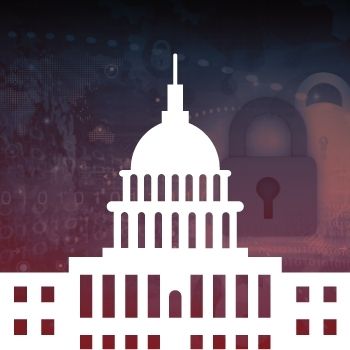Cyber Security: White House Adopts Zero Trust
Federal Government Embraces Zero Trust
On January 26th, 2020 the White House adopted a Federal zero trust architecture strategy requiring all federal agencies to adopt zero trust cyber security practices by the end of Fiscal Year 2024.1 With the current rise in nation-state attacks, cybercriminal activity, as well as discoveries of new zero day vulnerabilities, this move by the U.S. Government is unsurprising. In September of 2021, OMB released an initial draft of its strategy to combat the growing cybersecurity threat and opened it to public comment. Zero trust architecture is recognized by almost all security experts as the most effective way to protect an organizations’ systems, networks, and data from malicious actors.

What is Zero Trust Architecture?
Zero Trust Architecture is a security framework that continuously and consistently authenticates users throughout every interaction.2 There is never assumed trust between parties, instead each individual is required to re-authenticate every time they gain access to an organization’s systems. Zero Trust uses strong authentication protocols to prevent lateral movement between networks. Comprehensive Zero Trust architectures encompasses all users, applications, and infrastructure.
Why is Zero Trust needed in Cyber Security?
Zero Trust provides additional cyber security controls over an organization’s networks, systems, and data. Eliminating trust policies also eliminates the ability of malicious attackers to exploit those policies. Cyber-attacks increased by 27% between 2020 and 2021.3 Between lone actors and Nation State attacks, businesses are being bombarded by those seeking to exploit vulnerabilities. Keeping an up-to-date security policy that employs zero trust architecture is the best way to ensure your business is protected from outside attackers. Don’t give hackers an opportunity into your network. Talk to your IT team today about how implementing Zero Trust can better protect your data and your company.
Do you have additional questions? We’d be happy to answer them! Feel free to reach out to our security experts for more information how how to better protect your organization’s systems.
Related Blog Posts

What Is a Risk Assessment and Why Is It Necessary?
What Is A Risk Assessment? A Risk Assessment is a comprehensive and exhaustive examination of an organization’s current security controls and information systems. A senior risk assessor works to identify any existing threats or areas of concern, and...

What Is Penetration Testing and Why Is It Necessary?
What Is Penetration Testing? Penetration Testing is when an organization hires professional hackers, also known as “ethical hackers”, to identify vulnerabilities in an organization’s security architecture. Penetration Testing takes an offensive...

Information Security Tips
TOP SECURITY TIPS Creating an effective information security policy is critical to the survival of any organization. We’ve compiled a helpful list of all our best information security tips to help protect businesses against growing cyber threats. Be...

The Rising Need for Digital Forensics
What is Digital Forensics? According to US-CERT, Digital (Computer) Forensics can be defined “as the discipline that combines elements of law and computer science to collect and analyze data from computer systems, networks, wireless communications,...

Newsletter
Subscribe To Our Newsletter
We've been creating some excellent webinars and local events. Join our mailing list for the latest on industry trends and strategies for cyber defense.
Need Immediate Assistance?
Give us a call (405) 771-6399
Headquarters
3841 E Danforth Rd, Ste 106, Edmond, OK 73034
110 E. Houston St, 7th Floor, San Antonio, TX 78205
Copyright 2024 - Critical Fault, LLC. | Privacy Policy


